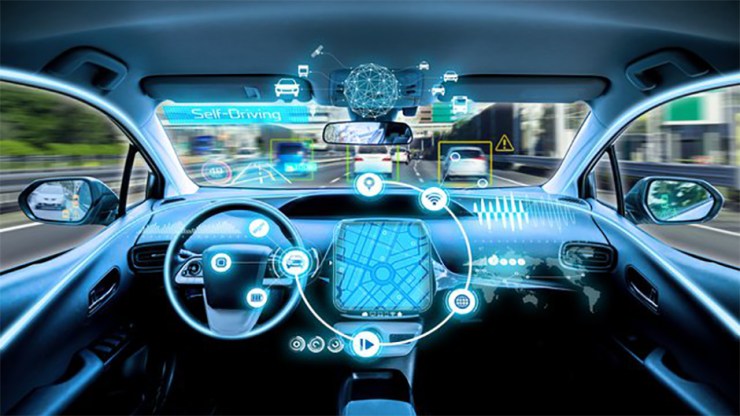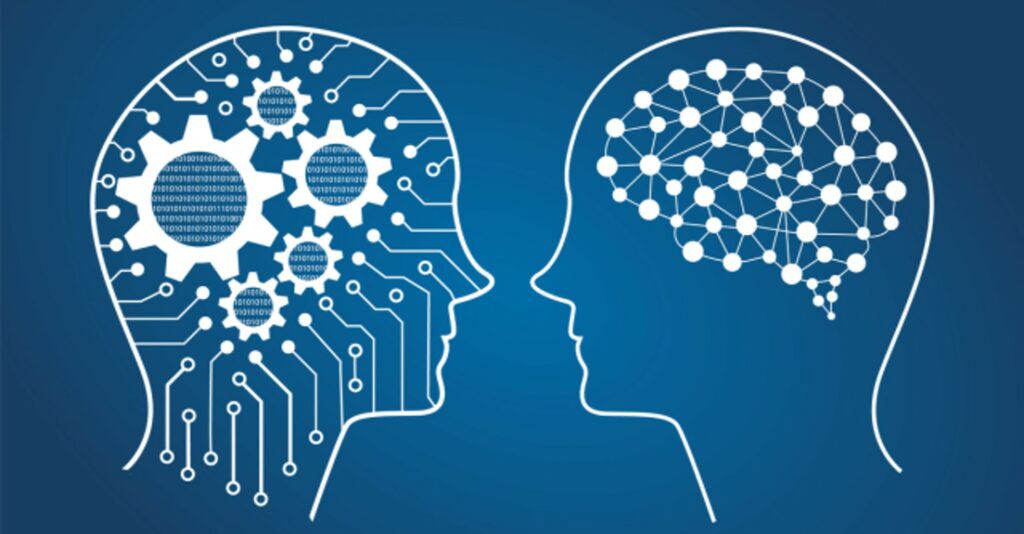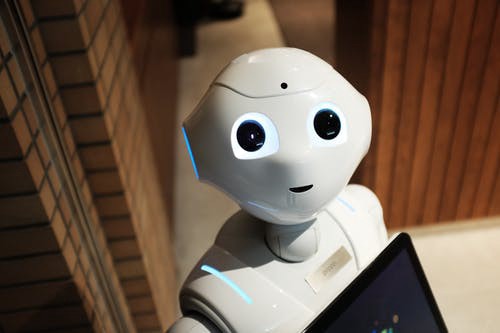Types of Artificial Intelligence

Artificial intelligence is among the top phenomena doing rounds in the tech world today. Over the last decade, the internet world has seen tremendous advancements and innovations that were thought to only exist in science fiction. These advancements are slowly becoming a reality in our world thanks to artificial intelligence.
Elevate Your Writing with Our Free Writing Tools!
Did you know that we provide a free essay and speech generator, plagiarism checker, summarizer, paraphraser, and other writing tools for free?
Access Free Writing ToolsThere are thousands of reviews of the take my online class service, and it is impossible to summarize them all. So find one that fits your needs, hire someone to take my online class on our platform and taste the success.
Most experts say artificial intelligence is a factor in production. They claim it has the potential to alter how various industries perform their production and also introduce new sources of growth. Some experts in this PWC article say that, “AI will contribute around $14.7 trillion by 2030 to the global economy.” The United States and China will benefit the most from the rise of AI since they account for almost 70% of AI manufacturing and production.
What is Artificial Intelligence?
In simple terms, artificial intelligence uses computers to do things that would otherwise require human intelligence. According to John McCarthy, “artificial intelligence is the engineering and science of producing intelligent machines.” He says it is related to the similar task of computers to understand human intelligence.
AI studies patterns of the human brain and also analyze the cognitive process. The results of these studies lead to the development of intelligent systems and software.
Do you know that cheating on proctored exams is possible and also effortless? Understand how proctorU works.
A Brief History of Artificial Intelligence
AI has evolved over the last few years. Below is a simple timeline to show how it has transformed since its inception.
- 1956 – this is the year the term artificial intelligence came to life courtesy of John McCarthy. He also held the first AI conference.
- 1969 – the first general-purpose mobile robot was made and named Shakey. The robot can now perform different tasks with a purpose.
- 1997 – this was the year we first saw the Deep Blue supercomputer. This supercomputer beat the world champion chess player to show how advanced AI is. It was such a massive improvement in the AI industry.
- 2002 – that was the year the first robotic vacuum cleaner was successfully manufactured
- 2005 – 2019 – this was the period in which AI has fully grown. We witnessed the introduction of robotic process automation, smart homes, and speech recognition, among other brilliant innovations.
- 2020 – Baidu made the LinearFold AI algorithm for the scientific and medical teams tasked with developing a vaccine during the SARS-CoV-2 pandemic. This AI algorithm predicts the RNA sequence of the COVID-19 virus in 27 seconds.
Learn about the recently launched GPT-4 which has improved intellectual capabilities that outperform the GPT-3.5 model.
Stages of Artificial Intelligence
Artificial intelligence has got three typical stages. They include Artificial General Intelligence, Narrow Intelligence, and Super Intelligence. Typically, these are the stages that artificial intelligence evolves through.
- Artificial Narrow Intelligence
This stage is also known as weak AI and involves machines that can perform narrowly defined tasks. These machines do not have any thinking ability as they only perform pre-defined functions. Examples of this AI stage include, Sophia the humanoid, Alpha-Go, Self-driving cars, Alexa, and Siri.
- Artificial General Intelligence
The AGI is also known as the strong AI stage. In this stage, machines can think and even make decisions like humans. There are no concrete examples of these machines, but they will be coming soon. They will be as intelligent as humans. Many experts, including Stephen Hawking, consider strong AI a threat to human existence.
According to Stephen Hawking, “The development of full artificial intelligence could spell the end of the human race…it would take off on its own and re-design itself at an ever-increasing rate. Humans, who are limited by slow biological evolution, couldn’t compete and would be superseded.”
- Artificial Super Intelligence
It is the AI stage where computers will have the capability to surpass human intelligence and knowledge. This stage is still hypothetical and is shown in science fiction books and movies. You might have probably seen a movie where machines run the world instead of humans. That is the supper intelligence stage of AI.
Most experts believe machines are very close to reaching this advanced stage where they can overpower humans in intelligence. Elon Musk said, “The pace of progress in artificial intelligence is incredibly fast. Unless you have direct exposure to groups like Deepmind, you have no idea how fast – it is growing at a pace close to exponential. The risk of something hazardous happening is in the five-year timeframe. 10 years at most.”
Get to know if Blackboard can detect cheating: open tabs, copy-paste, screen mirroring.
Types of Artificial Intelligence
To determine the different types of AI, you must understand their other functionalities. The types include:
- Reactive machines
- Limited memory
- Theory of mind
- Self-aware AI
- Reactive Machines

Here the AI operates based on the present data. The AI considers only whatever is happening currently. The AI machines here cannot evaluate future actions from any formed inferences. They only perform a small range of pre-defined tasks. An excellent example of this type of AI is the IBM Chess program. The program beat Garry Kasparov, who was the world champion.
- Limited Memory

With limited memory, AI can improve and make decisions by looking at past data. This AI has a temporary memory that stores past information and data and helps them evaluate future actions. Probably you have heard of self-driving cars.
They have a limited memory AI that utilizes data collected in the past. This data helps the AI make immediate decisions. These self-driving cars use sensors that help them identify traffic signals, civilians crossing the road or an object on the road to help make a quick decision and avoid accidents.
- Theory of Mind AI

This advanced type of AI is seen as an extraordinary machine in the psychology industry. AI focuses on the emotional intelligence of humans to understand the thoughts and beliefs of humans better. Theory of Mind is still in its early stages, but extensive research is happening to see how AI can become a reality.
- Self-Aware AI

We hope we never get to this stage, at least not soon. In this type of AI, machines are self-aware and can use their consciousness. Given the present circumstances, it seems that this type of AI is far-fetched. However, understand that achieving this level of superintelligence with AI is possible.
Branches of Artificial Intelligence
The good thing is that artificial intelligence can be used in the real world today to solve problems. It implements the following techniques:
- Deep Learning
Deep learning implements Neural Networks on high-dimensional data. The technology implements this to gain form solutions and insights on this data. Understand that deep learning is a more advanced Machine Learning technique used to solve advanced problems in the real world. Deep Learning is the technique employed in Alexa, Siri, and self-driving cars.
- Machine Learning
Machine learning involves getting machines to process, interpret and analyze data to solve problems in the real world. There are three categories of machine learning that include:
- Supervised learning
- Unsupervised learning
- Reinforcement learning
Machine learning is an integral part of data science, using algorithms and statistical methods to make predictions and classifications to find critical insights into data mining objectives. These crucial insights will usually drive decision-making in businesses and applications, and they drive key growth metrics.
As the data grows, you are sure to market demand for data scientists will shoot. Machine learning algorithms are created using diverse frameworks that accelerate solution development, including PyTorch and TensorFlow.
- Natural Language Processing
This branch of AI refers to drawing insights from natural human language to communicate with machines and help businesses grow. Amazon uses NLP to enhance user experience and comprehend customer reviews, while Twitter uses AI to filter terroristic language on the platform.
- Robotics
This branch of AI focuses on the application of robots. AI robots are machines in the real world to take accountable actions and produce desired results. An excellent example of this AI is Sophia, the humanoid among other robotics. Robots are created to handle tasks that seem extreme to humans. They are used to move large objects by NASA in space and even in the automobile manufacturing sector.
- Fuzzy Logic
Sometimes in the real world, you face a given circumstance and wonder whether the event is authentic. The fuzzy logic branch of AI offers flexibility for reasoning in uncertain conditions.
It modifies uncertain information by looking at the degree of correctness of the hypothesis. The AI will help you reason about naturally skeptical concepts. Fuzzy logic is flexible and convenient for implementing machine learning techniques. A concept exhibits a given degree of truth between 0.0 to 1.0. If that concept is true, the AI will provide a standard logic of 1.0 and give 0.0 for a false concept.
- Expert Systems
Expert systems were designed in the 1970s and later escalated in the 1980s. An expert system is a computer system that copies the decision-making intelligence of humans. It derives knowledge from the knowledge base by looking at the insight rules and reasoning with user queries.
Expert systems deal with complicated problems through reasoning, and their key features include reliability, responsiveness, high execution, and understandability.
Wrapping up artificial intelligence only grows better and better with time. As technology advances, expect AI to evolve and reach even more advanced levels where the machine can do the unimaginable. It is only a matter of time. Learn the best AI essay writers.

Special offer! Get 20% discount on your first order. Promo code: SAVE20

